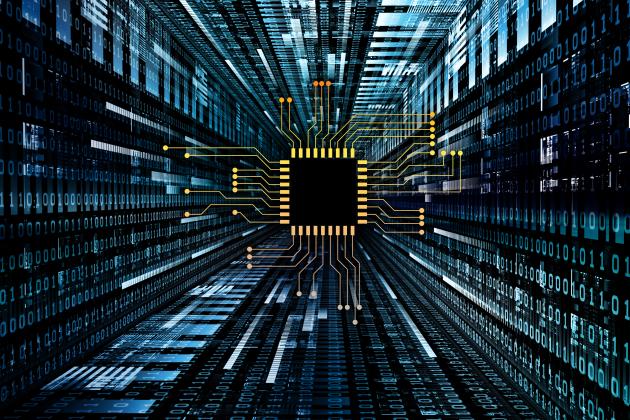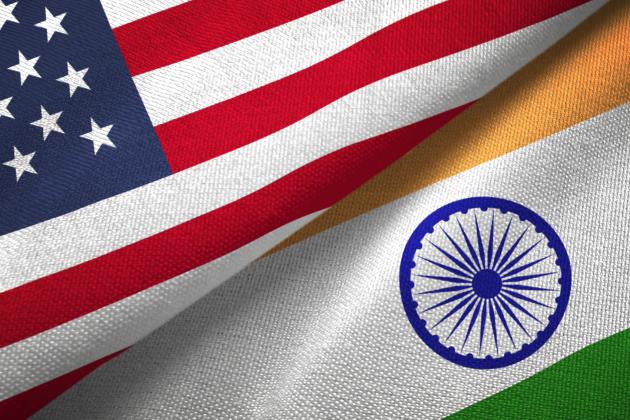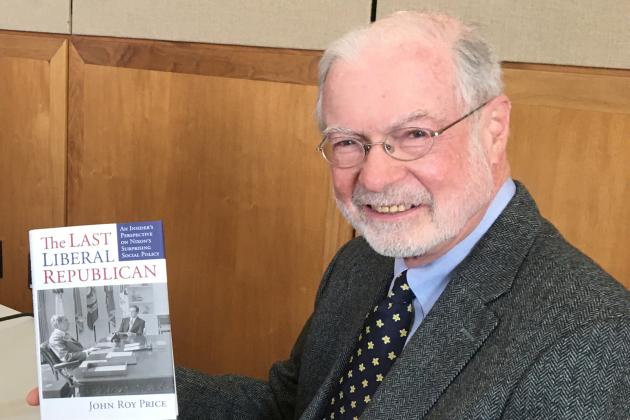PARTICIPANTS
David Mulford, Conny Arvis, Elizabeth Cobbs, John Cochrane, LtCol Jer Garcia, Tom Gilligan, Paul Gregory, Rick Hanushek, Nick Hope, Dan Kessler, Anjini Kochar, Roman Kraeussl, CDR Michael Nordeen, CDR Rebecca Ore, Elena Pastorino, CDR Michael Schoonover, George Shultz, CDR David Slayton, Richard Sousa, John Taylor.
ISSUES DISCUSSED
David Mulford, distinguished visiting fellow at the Hoover Institution, former vice chairman of Credit Suisse and former U.S. Ambassador to India, kicked off the fall policy workshop with a talk about India. The talk was informed by his time as ambassador there and also covered ideas from a paper he circulated, “Thinking Big on US-India Relations.”
The theme: India should be a high priority for the US, economically and strategically.
The common list of India’s shortcomings is real — bureaucracy, difficulty of getting things done, corruption, difficult rules such as joint venture regulations that favor Indian companies. But this is changing, and growth is the ending of this change.
Starting in 2003, India jumped to 5% growth, and its growth has been 5-10% ever since. The Modi government came in after a bit of a slowdown in growth, showing how important growth has become to India. Coming in with the first majority parliament since 1984 allowed Modi to pursue some dramatic reforms that pave the way for more growth.
Mobile phones have diffused through the whole country. India leapfrogged the whole landline era. With cheap mobile phones costing as little as $10, this has had a dramatic effect throughout the country.
Linked to mobile phones, there has been a revolution in banking and payments. There has been a push to open small bank accounts throughout the country, linked to electronic transfers, and a biometric id system. For example, think of an urban worker sending money home. Previously this was costly, inconvenient, and a lot of the money “leaked” along the way. Secure low-cost electronic funds transfer is a life-changer here. Similarly, many of the government subsidies are now done via secure transfer. Estimates of “leakage” in the previous system were as high as 35%. This 35% has allowed the government to save substantial money without running the political dangers of reducing subsidies. Eighty percent of the country is now banked. The remaining 20% remains an opportunity for the future, but the achievement has been transformative.
Now growth is back up to 6.5% with 7% forecast for next year.
Financial reform is also bearing fruit. HTC bank opened 1400 rural branches in the last 12 month, and is now making money on agricultural and educational loans. These are larger than microfinance loans, and much less expensive than traditional money lenders. Government banks (62%) remain a problem, as they have a lot of non-performing loans and are otherwise inefficient. But private banks like HTC are stepping in to fill the gap. The introduction of a unified GST is a major reform. It has been bumpy, but trucks no longer stop for hours or days at each state border crossing. All in all these major structural changes pave the way for substantial further growth.
John Taylor asked about the currency reform, in which the government forced everyone to turn in 100-rupee notes. David replied that yes, it has been seen as a monetary misstep, and led to a lot of people hiring others to change their money, and bank tellers also making some money on the side. But its’ main message was a shot across the bow to the cash, corruption economy, and let them know the government is serious and can do it again.
Richard Sousa asked whether rising inequality would bring back a drift towards socialism. David responded that this certainly is a standard part of how people in India think about things. You can’t use the word “privatize,” and despite their growth from liberalization, there is a general mentality that the government must control things. He also gave the example of joint venture rules, which allowed the Indian partner to block any expansion of the American partner, even if the former was bankrupt. The liberalization of this kind of rule is only partial.
Elizabeth Cobbs asked whether people seeing the benefit of freedom in growth might not push in the other direction, and make future growth easier. David responded that India still faces a huge demographic challenge. It must produce a million jobs a month!
In sum, bank accounts, online transfers, expanded banking and cell phones have been great levelers. A farmer used to have to drive his wheat to market, and then find out the price, only able to drive it home. Now he can know the price and sell it from home, driving it out to consummate the transaction.
India also has essentially no credit cards. As with phone lines, they have leapfrogged (and even leapfrogged the US - JC) to low cost electronic payments.
A third part of this reform has been the biometric ID system introduced in 2009. Now 83% of the population has one, and soon all bank accounts will be linked to the biometric iD.
Turning to international relations, the best contacts with India have been private sector and civil society, which are more stable than the ups and downs of government relations. India has close contacts to the US through students and many immigrants.
The US - India civil nuclear agreement is a good example of how to do things. There was a lot of debris left after the lifting of sanctions. For example 26% of high tech exports needed special licenses. That is now 1%>.
President Bush accepted India’s nuclear weapons, without their joining the nonproliferation treaty, but with agreement to abide by IAEA safeguards. India has complied even though not part of the formal treaty. In this way, the US changed to a healthier partnership relationship.
Rick Hanushek asked about the educational system, and David verified this is a major problem. The K–12 school system is broken, leaving many Indians illiterate or with poor skills. Those who can afford to save and send their children to private schools. However, India makes room for many jobs at low wages, by doing things with much more labor than we do.
In closing, David emphasized the need for India to move from a regional focus, with much emphasis on Pakistan relationships and a bilateral relationship to the US, to a more global vision.
Summary by John Cochrane











